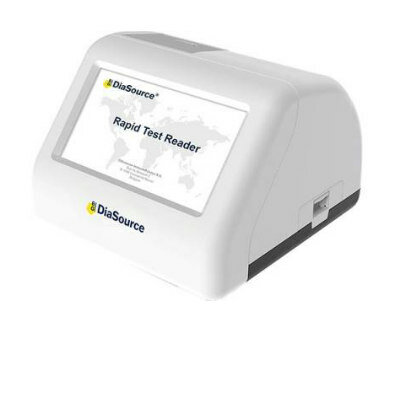Three Genes Linked to the Inheritance of Crohn’s Disease Identified
By LabMedica International staff writers
Posted on 29 Dec 2011
An advanced gene mapping technique has revealed the location of three genes on chromosome 16 linked to the inheritance of Crohn’s Disease (CD) that are in near proximately to the gene for nucleotide-binding oligomerization domain-containing protein 2 (NOD2), a known CD causative agent.Posted on 29 Dec 2011
Crohn’s Disease is a chronic inflammatory disease caused by interactions between environmental, immunological, and bacterial factors that usually affects the ileum and colon, and frequently runs in families. The inflamed lesions are rich in inflammatory cytokines, particularly interleukins -1, -6, and -12 and tumor necrosis factor alpha.
Homozygosity for a mutation in NOD2 increases the risk of the disease by a factor of 20 to 40. NOD2 encodes an intracellular protein that contains two caspase-recruitment domains, a nucleotide-binding domain, and 10 leucine-rich sequence repeats in the C-terminal region.
In the current study, investigators at University College London (United Kingdom) sought additional genetic markers that would help predict the likelihood of developing CD. Towards this end they used an advanced gene mapping technique called linkage disequilibrium mapping (LDM) to analyze samples from 1698 CD patients maintained by the Wellcome Trust Case Control Consortium and from 813 patients provided by the US National Institute of Diabetes and Digestive and Kidney Diseases.
Results published in the December 9, 2011, edition of the American Journal of Human Genetics revealed the identification of three novel genes, CYLD, IRF8, and CDH1/CDH3, associated with CD and involved with inflammation and immune system malfunction.
Senior author Dr. Nikolas Maniatis, professor of genetics at University College of London, said, “This project essentially maps the most likely location of faulty sites for Crohn's Disease in the genome. By combining several pieces of information together, our technique lets us increase the power of our analysis. These are very exciting times, as we can use these genetic maps to pinpoint where the causal sites of Crohn's Disease are located. Although it has been shown in the past that a proportion of patients suffering from Crohn's Disease do not carry the NOD2 mutations, up until now no other genes on chromosome 16 have been published in genome-wide analyses.”
“This paper shows how personalized medicine could work and also help to separate out patients. For example, just as there are many different types of cancer with different underlying genes, it seems that there are also mutations in different genes for different types of Crohn's Disease,” said Dr. Maniatis.
Related Links:
University College London













